Jan 2025
Many, many years ago, a God was born in one of the galaxies. To this day, nobody knows which galaxy it was. As the God grew up, he started having more and more problems with other Gods, humans, animals, and he wanted to be independent.
As a grown man he travelled through the galaxies, explored everything that was new to him. Once, he came to a place where there was nothing, just darkness.
He brought a girl to this place and transformed her into a Godess, the mother earth, our mother, he called her Pachamama.
Something was missing, still. He wanted servants, helpers, people that cared for him, so he created the human race. All souls, men, animals, plants, everything that exists, has to serve this God. Europeans were created last, that‘s why they are taller and lighter as people from different cultures.
There were many different conflicts between the God, the servants and nature. The God was ashamed and felt guilty for creating so much chaos. To stop it, he chose two servants - a man, to transform into the sun, and a woman to be the moon. Not knowing, that those two were a couple and madly in love.
Now that the couple was separated, they couldn‘t see or touch each other. The sun lost it‘s light, and for a long time, it was night, only darkness. That‘s why today there are so many nocturnal animals, and it‘s more dangerous for us men to go out into nature at night.
Everything got out of balance. The sun told the God what had happened, and again he felt guilty. He started moving the planets and so created the eclipse - short moments where the lovers can see each other. Today, sun and moon are known as Gods of love.
This is what the people of the indigenous tribes of the Sierra Nevada de Santa Marta believe. There are 4 different tribes: Wiwa, Kogui, Wíntuka and Kankuamo.
Nothing is for nothing. Everything has a purpose. Every body part represents something of the surroundings or the universe. Nobody dies, depending on how the person lived, they reincarnate as a sacred animal, like a jaguar or colibri, or as a chicken or donkey.
The four tribes have very similar believes. They want a pure soul. If you have seen the Avatar movies, which I hope you did, they should paint a pretty good picture of the lice of the tribes here, said one of the guides.

But, how did I hear this story and why is this post called 50 shades of mud?
I was searching for a lost city. Four days of hiking through the jungle, with guides of the Wiwa tribe. The stories I heard at the ultimate campfire, on our last day, as Rafa, one of our guides, told this and much more with his dry sarcasm and yet serious but kind face.
We started in Santa Marta, 4x4s brought us up into the mountains, and then we started walking. The roads were only made for hikers, motorbikes and mules.
We slept in the middle of the jungle, only a roof over our heads and a mosquito net around the beds. At night we listened to the noises of the jungle, told stories. Within a few hours, a bunch of strangers became a big family.
Hiking in the jungle is hard. 30°C, 85% humidity or more. Everything is wet, stinks, is heavier. In Colombia, „flat“ has a different meaning - it‘s not flat, but a constant up and down.
The first camp was on top of a hill, with an almost 360° view over the surrounding valleys. We saw the sunset and sunrise. I was so peaceful, calm.
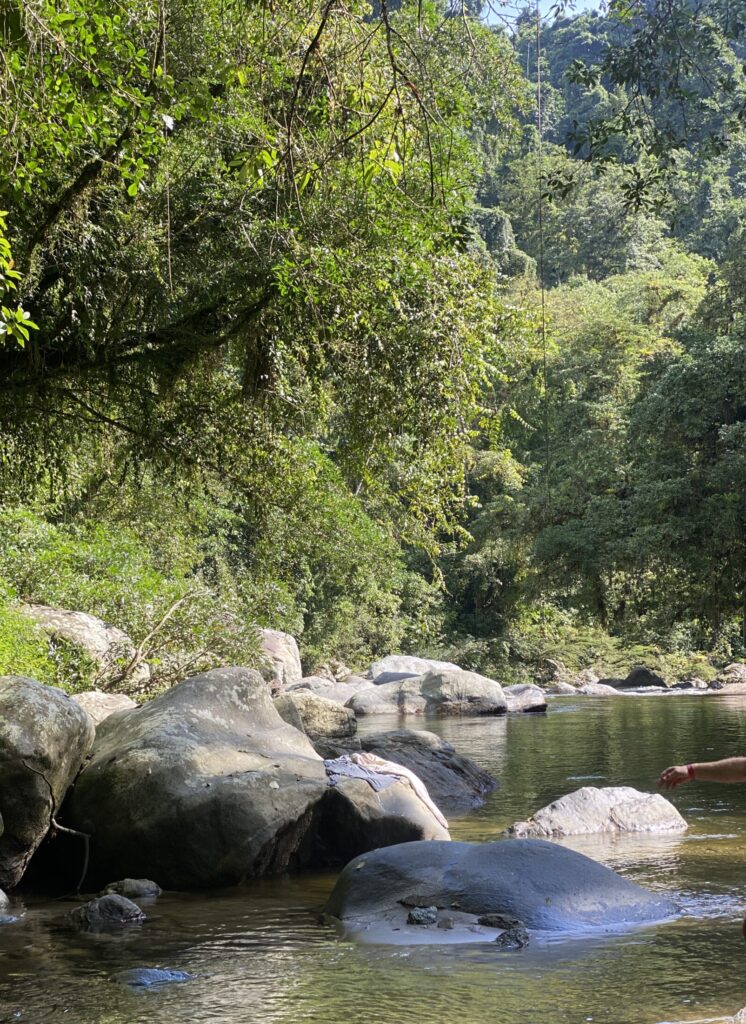
The second day was supposed to be the hardest - down the mountain, up another and down again. We stopped to bathe in a river. The water was freeeeezing, but felt so good on our aching bodies and legs. The river was deep enough to swim in, it was only my group there, in the midst of nature. How great it was.
At night it started raining. We slept with the noise of the rain on the metal roof and the river close by, not knowing that it wouldn‘t stop.
The third day was the day we would reach the lost city. That was never really lost, the indigenous people always knew about it, but they didn‘t tell the colonialists as they were treated quite badly by them. For centuries, nobody besides the tribes knew about the existence of this city.
Shortly after we started hiking we had to cross a creek that was swollen to a river. Kneedeep in water, we were wet to the core. 1200 steps later, we saw what we came here for.
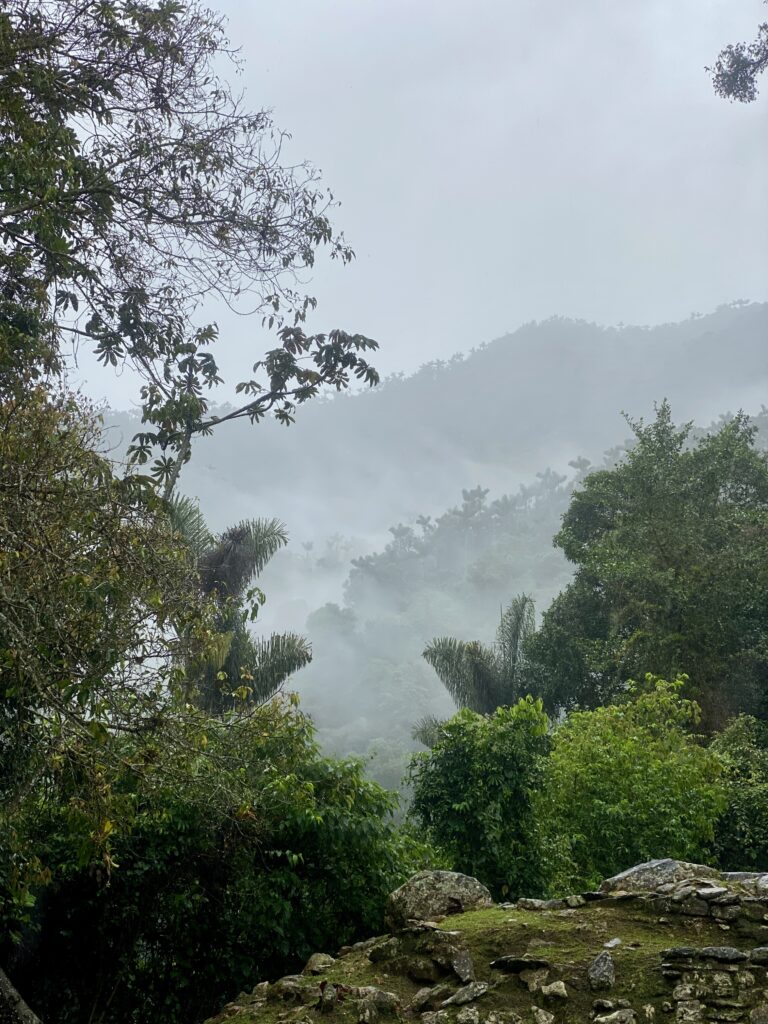

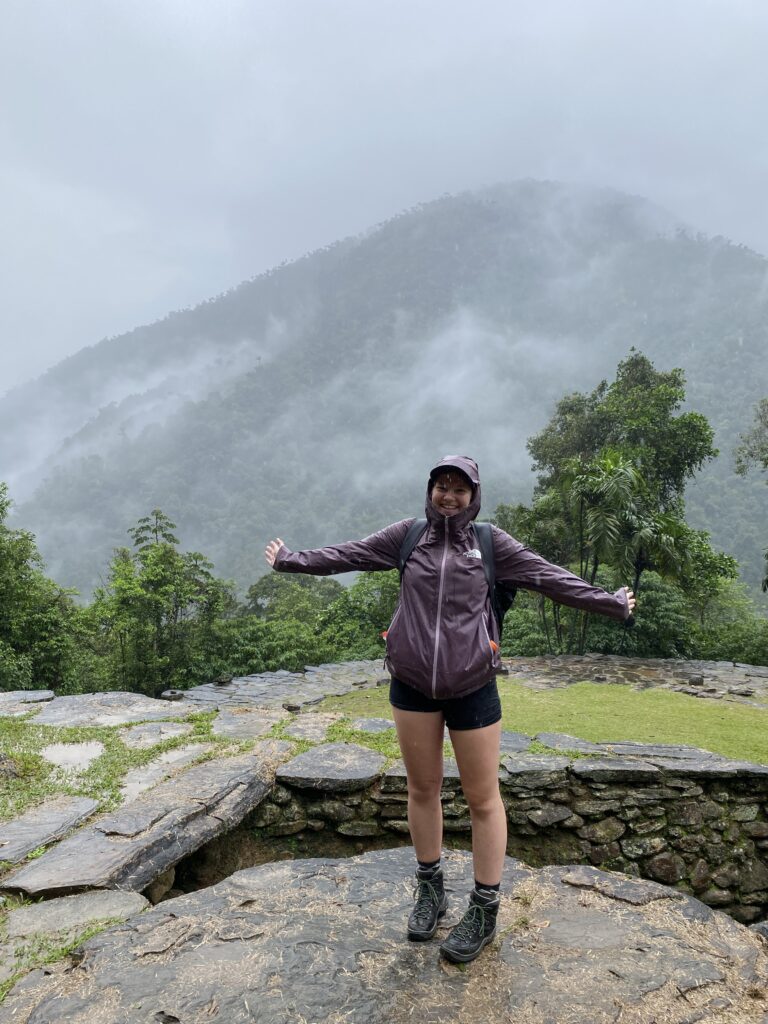
Our guides started a ceremony. The city only allows people to enter, that are pure in their souls and ready. We received coca leaves with our left hand, closed our eyes, put all negativity and bad into the leaves. Close the hand, blow on it, and scatter the leaves over the fireplace like an offering.
The rain and fog added another mysterious level to the city. During the ceremony I started crying, I don‘t know why, I just felt the energy of this place as if my doubts and fears were washed away. As if I was connected to nature, the universe, the Gods I don‘t even necessarily believe in.
We explored the city, laughed about the different rain protection strategies - people get really creative - and learned more about the culture and past of the lost city, Teyuna, and the culture of the Wiwa and other tribes. I won‘t tell you too much. If you want to know more, do the trek yourself or research. I am not the person to tell you this, I didn‘t grow up part of the tribe, I could never tell it in a way that Rafa, Andres and Patricio did. Everything I tell you is that it‘s very interesting and that we can learn a lot from them, about their lifestyle, connection to nature, pure souls etc.
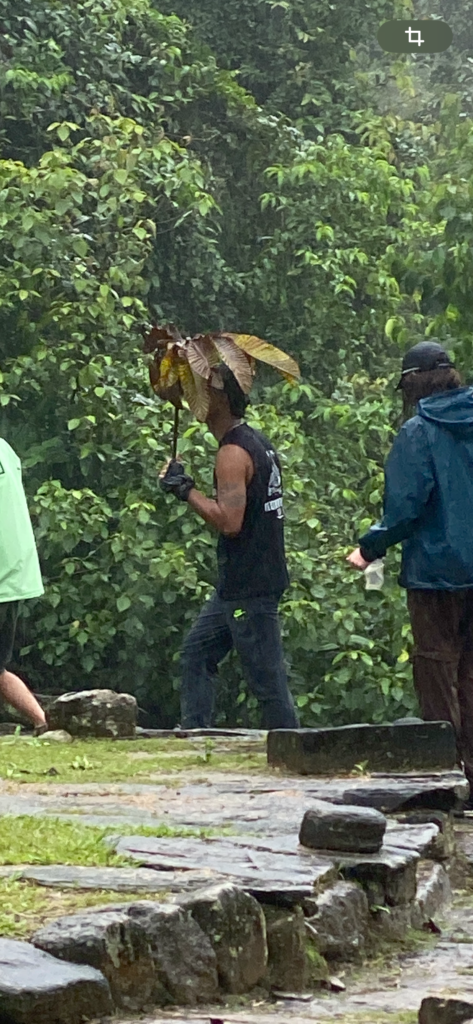
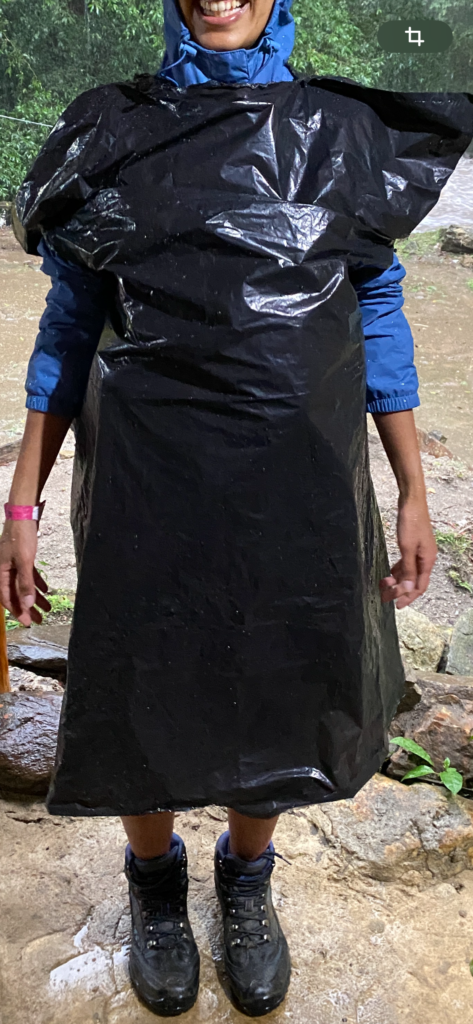
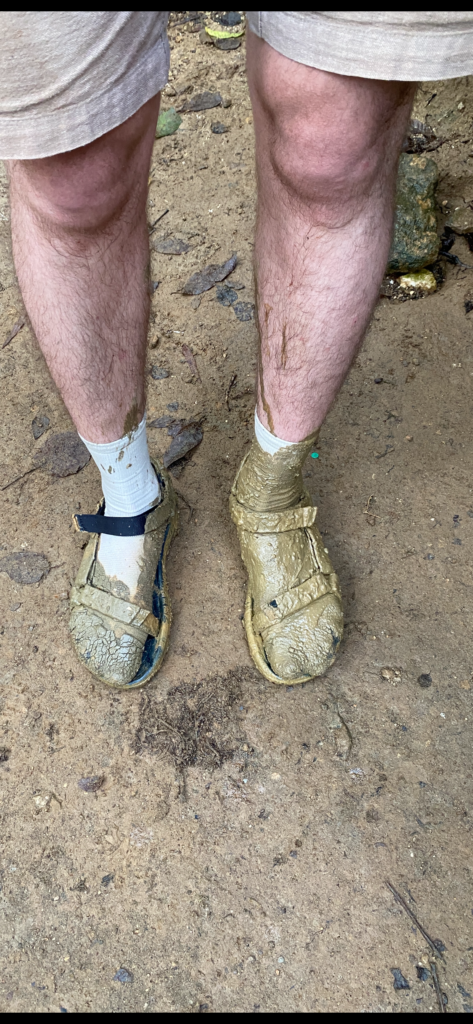
We started going back, to the last camp. It was still raining, I had no more dry clothing left. After the shower I dried myself with a wet towel and put on wet clothes. We ate dinner, and then I was surprised with the best news of the day: we were having a campfire.
We sat around the campfire and Rafa told us more stories, like this one:
In the Wiwa culture, women are sacred from the moment they get their first period. Years ago, there was a man, that came and visited girls during this time and brought presents. If the girl fell in love with him, the man returned as a jaguar and ate the girl.
The Mamu, the leader of the tribe, knew something was wrong and tried finding out what it was. He found the jaguar and spoke with him, asked him what he needed to stop. The jaguar said he wanted the respect of a grandfather.
With this, the killing stopped. Today the Wiwa believe that if there is fog, there is a jaguar trying to hide from his shame, not wanting to be seen.
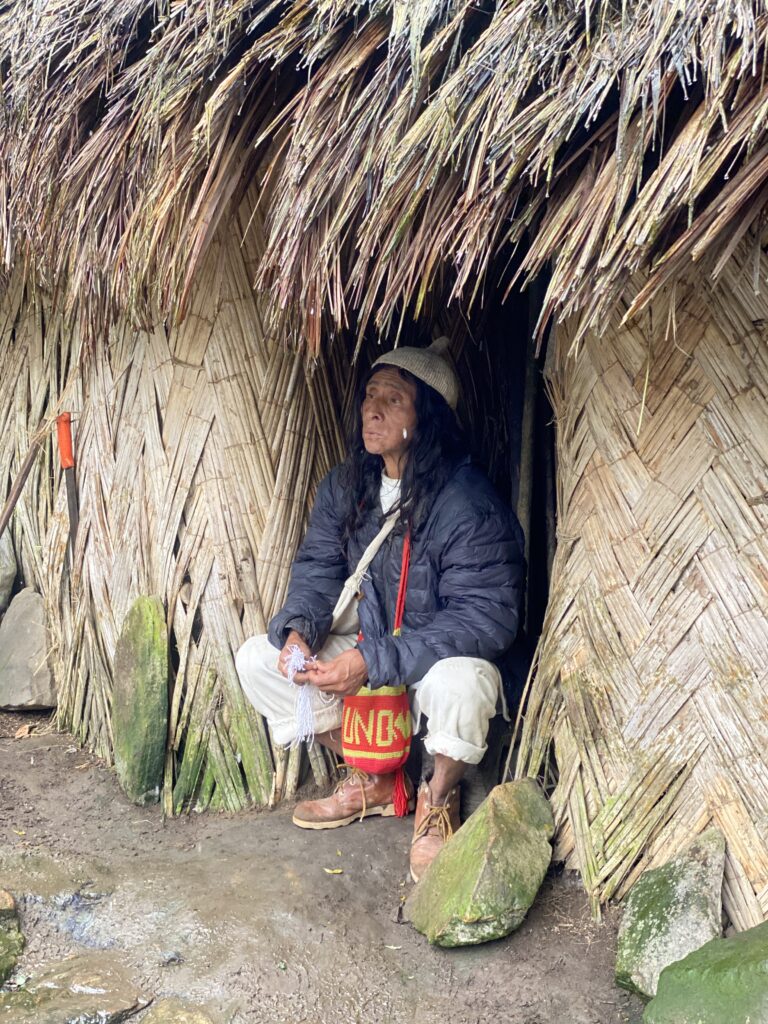
The rain didn‘t stop. Nobody expected that. Later I found out that half of the city was flooded too and without electricity, signal and water.
Creeks grew to be rivers, roads and paths were gone and buried under trees or were ankledeep mud. Never in my life had i thought about how many shades mud could have. I saw white, beige, brown, red, green and black mud, and everything in between.
It felt like I took one step forward and two steps back. Everything was slippery. It kept raining, everything was gross and wet, the shoes twice as heavy.
One of our group had broken shoes and had to hike in sandals and white socks - no, he wasn‘t German. I laughed so hard I cried when I saw him at one of the stops.
Finally we came to the place we started at. I was surprised about how easy it was to walk, still, and how well I did. To be fair, I put my bag on a mule the last day. As if I knew what was coming: The jeeps couldn‘t drive on the roads, and we had to hike 3 more hours - this time, with the backpack.
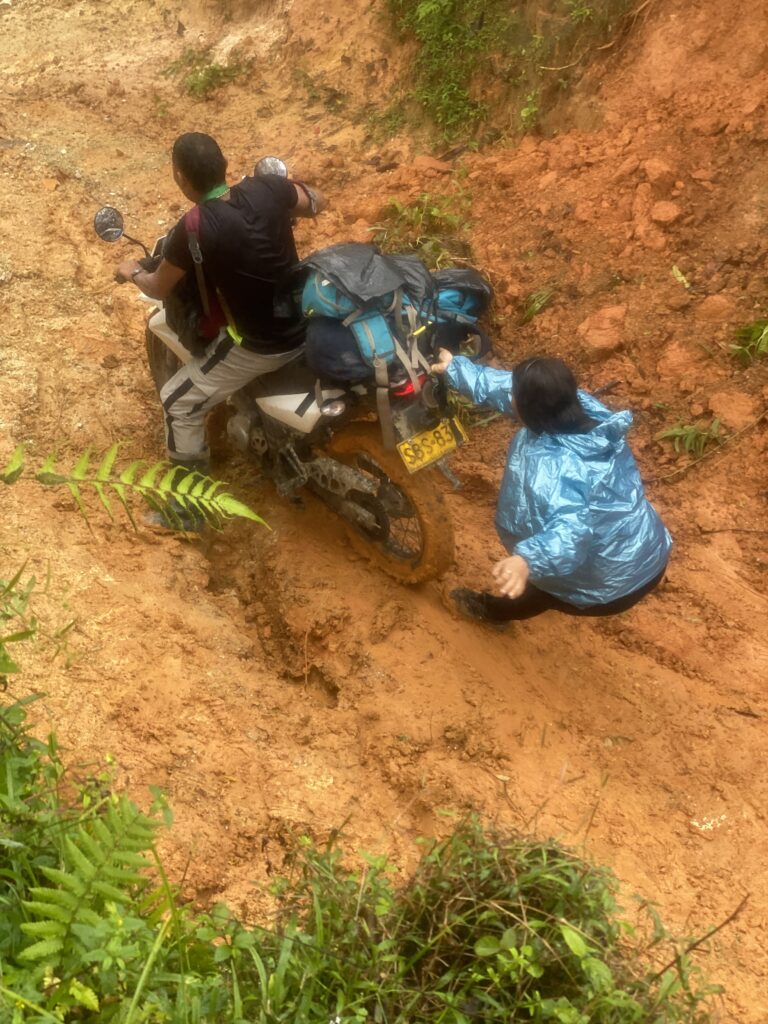
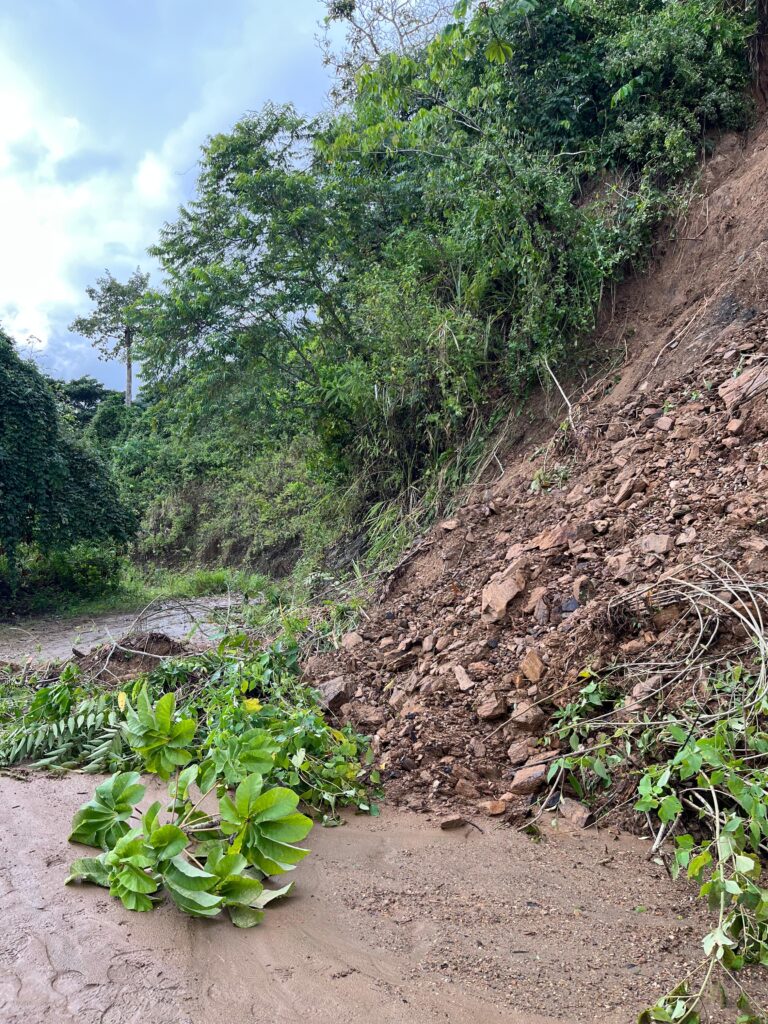
I was so exhausted, I didn‘t believe what has happened. But when you have to, you can. I couldn‘t stop because if I did, I wouldn‘t start waking again. Step by step, or as they say here, un paso a la vez.
Soon I saw the first land slide, it was still quite small. People drove by on motorbikes, had to push on steep parts, a woman fell off the back and landed in the mud, kids without helmets drove the same way. The land slides were getting worse and worse. In between those we crossed rivers, sometimes ankle deep, sometimes you could hop over rocks, sometimes knee deep.
Absolutely gutted I rounded a corner and saw the jeeps. I was so happy! The driver said we‘d have to be 12 people to go, but the river is swelling and soon we might not be able to cross.
We had to leave. He drove so fast, drifted around corners, almost ran over some motorbikers. I was so scared, I just closed my eyes and cried. One of our group/big family instantly came over, hugged me and calmed me down.
At the river, the next news: We couldn‘t cross. Nobody knew when we could, we‘d probably have to sleep here, without food and water.
We watched the Colombians carry motorbikes over the river and desperately trying to find a solution.
We could cross on foot. I was in the river up to my waist. I was so nervous I laughed and cried at the same time. One of the Colombians helped me over. As he saw my state of mind, he took my hand, looked at me and started singing a wedding song. I had to laugh, it worked.
It was so beautiful to see how close we got as a group. Someone was always in high spirits and it was contagious.
Finally we sat in a jeep that would bring us to the road. From there, we could take a bus back to the city. We fell into the seats, only to be stuck in traffic 10 minutes later.
First, nobody knew what was going on. Then we heard that the locals blocked the road until they have electricity again. It‘s very normal around here.
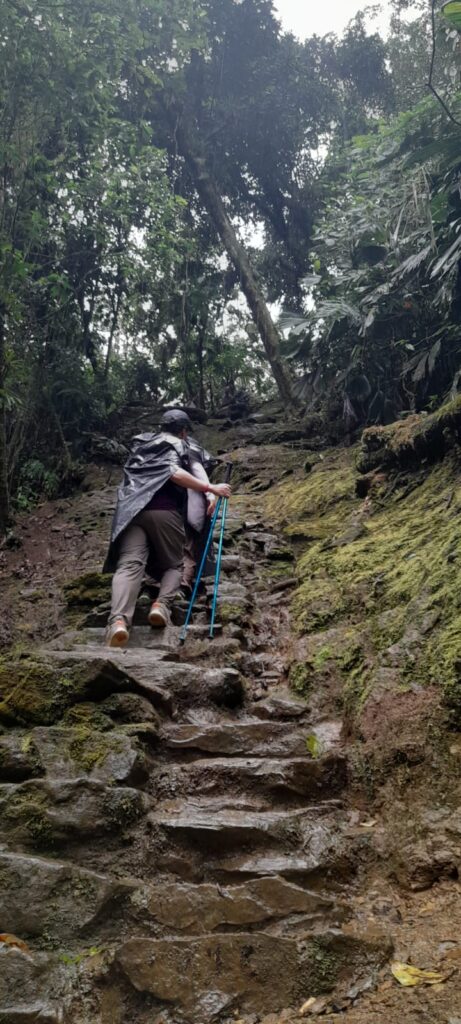

I was half asleep. When i randomly opened my eyes I saw a tourbus out the window. I watched and recognised someone from our group in one of the jeeps. I opened the window and waved. We ran - we RAN after a day like this, can you believe it? - jumped into the driving jeep because if he stopped he couldn‘t go through the barricades, they wouldn‘t let him. Someone handed me a bottle of rum, I have never tasted alcohol as great as this.
Shortly after we were stuck again. Even the ambulance was checked before they let if through. People stood on the road, chatted, waited patiently for the lights to turn on because then the blockades would finally end. Everything was peaceful.
Someone came from the other side. There is a taxi that could take the people that needed to catch a flight back to the city. I was allowed to come with them, as did the Spaniard, that now had to return the sandals so was sitting in the taxi in underwear and a shirt beside me. This image lives rent free in my head forever.
Instead of 3 pm I got to my hostel at 11. This was the best shower of my life.
It‘s been a few days, but I still haven‘t processed everything that has happened. It was simply on near death experience after another. Still, it was beautiful. The closeness with the rest of the group, the high spirits and positive mindset, the hike itself. We all grew and went above and beyond what we thought was possible.
In those 4 days we walked over 70 km. Nobody knows how much it actually was, but this seems quite right, according to different sources. In 30°C, 85+% humidity, and a tropical storm. What an adventure.

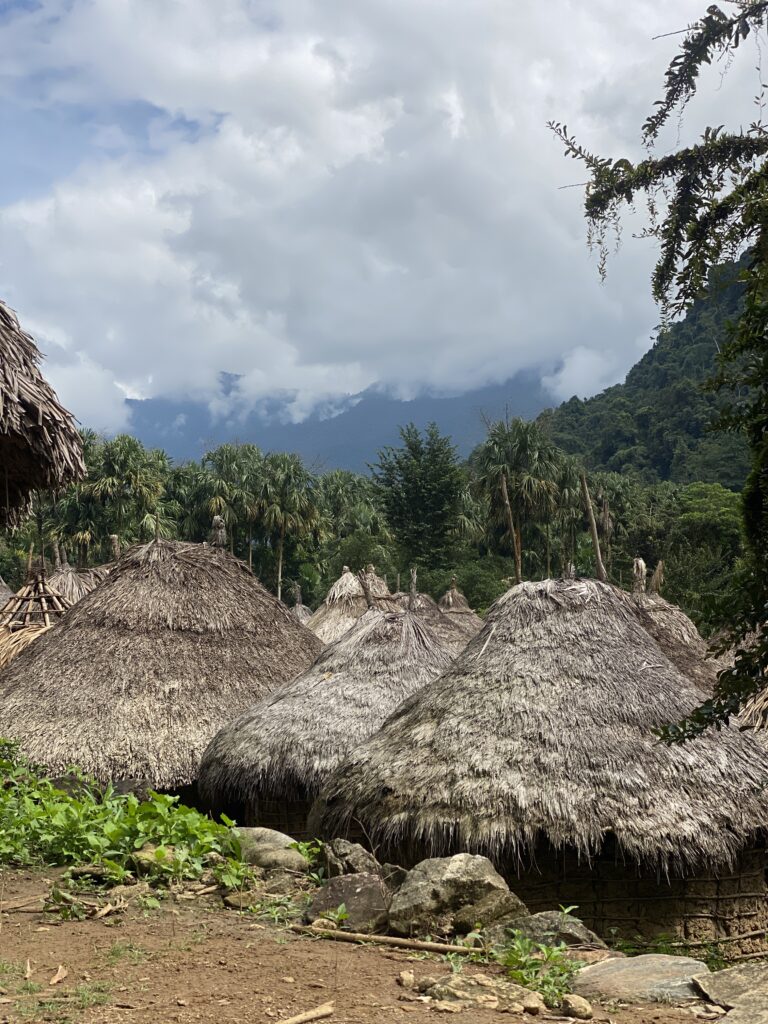
So, now that you‘ve made it this far - want some more history? I would love to tell you a short summary of what happened around here in the past centuries.
Everything was fine until the Spaniards came. They thought the people here were worth less because they lived „primitive“ lives without modern weapons and sail boats. So they were enslaved, sold, murdered. The colonialists also went for the gold and other precious metals in this area.
There were many wars between the europeans and the indigenous people. In 1600, Juan Guiral Velón brought over 200 soldiers here to end the tribes. The tribes fought as one, but with their poisoned arrows and bats they had no chance against the modern weapons of the spaniards and lost. Over 60 elders were sentenced to death, the villages were burned down and destroyed. The survivors weren‘t allowed to leave the Sierra Nevada ever.
The prisoners were used as bio weapons. If one of the Europeans got sick with somehing that doesn‘t exist here, they gave it to one of the indigenous people that don‘t know what to do against these new diseases, and then they were let free to take out entire tribes.
That‘s why Teyuna, the „lost“ city, was forgotten for over 400 years, and only the tribes knew about it. Until someday, someone spotted something from a plane and a bunch of scientists and raiders came in.
At the same time, in the port cities of Santa Marta, Cartagena etc., there was the thing with the african slaves… So many things happened at the same time, so much suffering, so much war and dying.
A question I ask myself about the lifestyle of the people here… Like so many other cultures all over the world they see earth, sun and moon as sacred. For every felled tree, every slaughtered chicken and every harvested root they asked permission and thanked with offerings.
There‘s nothing written down, history was handed down only verbally. How much knowledge was lost? How much do the people of the tribes know that we could learn from? so many questions.
I think we could take a lot from them. The connection to nature, pureness of souls, non-judgemental mind… in europe this is mostly lost, we care more about work and materialistic things. What is the right way? Is there an in between? I met one of the guides in the city, in traditional clothes but walking with his phone in his hand. It was strange at first, seeing him this way, but he seems to enjoy the mix of city life and culture / village life. I admire him being able to do both.

Großartiges Abenteuer und toll geschrieben. Bezüglich Naturverbundenheit können/müssen wir Europäer wohl einiges noch lernen….
neuer Punkt auf der Bucket List? 😆
stimme zu! oder wieder lernen…